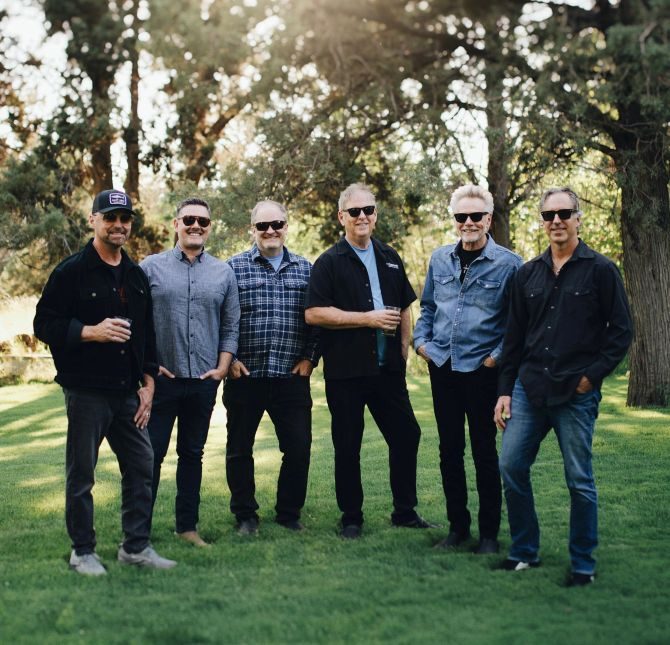Adults find a place in martial arts
Published 4:00 am Monday, February 4, 2013
Barb Wayne loves karate.
She trains at Sortor Bushido Kai Karate in Bend — a lot. Wayne estimates that she takes about 14 classes per week, assisting the instructor in most of them, organizing and leading the other students.
Even without that leadership role, Wayne would likely stand out in the crowd at her studio. Unlike many of her classmates, Wayne is an adult, at 55 years young. A second-degree brown belt (a relatively advanced rank in her studio’s system), Wayne took up karate about five and a half years ago, following in the footsteps of her daughter, Gabi, who is now 14.
“Well, I can either sit here for seven years or I go out there and try,” Wayne, who lives in Bend with her daughter and husband, explains of her rationale for taking up the sport. “And (Gabi) has been a great sensei (teacher) to me all along, and we have had a ripping time doing this together.”
Brian Sortor, the owner of Sortor Bushido Kai Karate, estimates that about 80 percent of his students are kids and about 20 percent are adults. And he says it is fairly standard for kids to participate in martial arts in higher numbers than their elder counterparts. But that does not mean that adults cannot benefit from taking up martial arts and even choosing to test themselves in competition, like Wayne does.
“Kids want to be ninjas and superheroes and awesome, and the parents, the adults, I think get into it not knowing what they’re going to experience,” Sortor observes. “And then the physical and mental challenges that they face and then overcome — there’s just something so invigorating about that, about overcoming challenges and doing things you didn’t think you could do.”
The most common reasons that Sortor has found that adults take up martial arts are for self defense and to get in shape. But, he adds, some begin with other reasons in mind, such as the desire to compete in tournaments, participate in a family activity, or for the fun and experience.
When it comes to competing, Mark Colgan, who operates the Victory Martial Arts karate studio on Bend’s west side, echoes Sortor’s observation about higher levels of participation among children.
“It’s been my experience as people get older, they become a little more self-conscious about people looking at them, and they’re not as apt to put themselves out there in a competition setting with something that’s new,” Colgan says.
But deciding to compete can enhance the martial arts experience, and Sortor encourages his students to try out competing because doing so can help them rise to new heights.
“You can only get so good in the circle that you feel safe in,” Sortor explains. “And you can get very good there, but you can’t reach your potential. You have to be pushed and made uncomfortable.”
Recently, four of Colgan’s students qualified for a United States Karate Alliance national competition at a regional event in Palm Springs, Calif. Three of those four students were adults. And if his wife, Karra, can serve as an example, those who do not take up martial arts until their adulthood can become highly successful. Karra Colgan, who is now 32, did not take up martial arts until she was 24, her husband says, and she went on to become a multiple-time national champion. Colgan has even taught students in their 70s who have competed, he says.
Martial arts competitions in a number of disciplines allow for participants with varying interests, ages and abilities to compete. Karate, wushu and taekwondo, for example, have weapons, sparring and forms divisions (taekwondo also offers board breaking), and tai chi has forms and “pushing hands” (sparring). Divisions may be broken down further by experience level and/or age. (Forms are prescribed sets of movements performed in order, which is similar to, both Sortor and Colgan say, a gymnast performing a gymnastics routine.) So martial artists who want to compete but do not like contact that comes with sparring or who perhaps are nursing injury can still participate.
In fact, those septuagenarians Colgan mentions competed in weapons and forms but not sparring. And Wayne currently does not compete in sparring, which she says she is still studying, and she finds herself drawn to forms in particular.
When it comes to competing, JianFen Chen, who opened Oregon Tai Chi Wushu in east Bend this past fall, recommends that martial arts students make the decision to compete based on their physical condition.
“Everything’s good, yes, you should go compete,” Chen says.
As for Wayne, she says she plans to compete in about six tournaments this year — including three national-level events and an international competition in San Francisco — an increase in her average of three or four annually.
“The reason to … compete is just you get to see yourself up close inside out. And it’s never about beating other people, never, never, ever. And so people … have that attitude of OK, I’m going to be so gutsy that I’m going to really let people look at me inside out, up close, and I’m going to go see if I can present what I’ve been working on so hard for months and months.”
And that is something any martial artist can do, no matter the age.
As Chen sagely puts it: “Your heart, it never gets old. Your heart (is) always young.”








